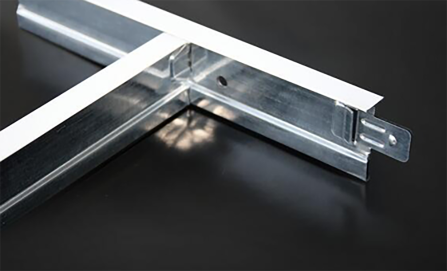Nov . 05, 2024 05:53 Back to list
access panel ceiling
Understanding Access Panel Ceilings A Comprehensive Guide
Access panel ceilings have become an essential feature in modern architectural design and construction. These panels not only enhance the aesthetic appeal of a space but also serve practical purposes by providing easy access to critical infrastructure. This article delves into the various aspects of access panel ceilings, including their types, benefits, installation, and maintenance.
What are Access Panel Ceilings?
Access panels are discrete openings within a ceiling that allow maintenance personnel to access plumbing, electrical wiring, and other essential building systems concealed above the ceiling tiles. These panels can be made from a variety of materials such as metal, plaster, and plastic, and they can be designed to blend seamlessly with the ceiling for a clean and unobtrusive appearance.
Types of Access Panels
Access panel ceilings come in several types, each tailored for specific needs and applications
1. Standard Access Panels These are the most commonly used panels designed for typical maintenance access. They are often painted or finished to match the surrounding ceiling.
2. Fire-Rated Access Panels These panels are designed to withstand fire for a specific duration. They are crucial in commercial and industrial applications where safety compliance is paramount.
3. Acoustic Access Panels Specifically designed to reduce sound transmission, these panels are ideal for spaces where noise control is essential, such as theaters and conference rooms.
4. Security Access Panels These panels are equipped with locks and are used in areas requiring limited access, such as data centers or secure facilities.
5. Drywall Access Panels Compatible with drywall ceilings, these panels maintain the integrity of the drywall while providing necessary access points.
Benefits of Access Panel Ceilings
The inclusion of access panels in ceiling designs offers numerous advantages
1. Easy Maintenance Access panels provide swift entry to critical systems like electrical and HVAC components without the need for extensive ceiling demolition.
2. Enhanced Aesthetics With a wide variety of designs available, access panels can be customized to match the décor of a space, ensuring that functionality does not compromise visual appeal.
4. Cost-Effective While the initial investment may be higher, the long-term savings in maintenance costs and reduced labor can make access panel ceilings economically advantageous.
access panel ceiling

5. Customization Access panels can be tailored to fit various sizes and designs, accommodating different ceiling structures and user needs.
Installation Process
The installation of access panel ceilings should be approached methodically. Here’s a brief overview of the process
1. Planning Identify the areas that require access based on the building's infrastructure needs and maintenance practices.
2. Choosing the Right Panel Select the appropriate type of access panel that meets specific requirements, such as fire rating or sound absorption.
3. Measuring and Cutting Carefully measure the installation area and cut the necessary opening into the ceiling material.
4. Installing the Panel Secure the access panel into the opening following the manufacturer's guidelines to ensure proper fitting.
5. Finishing Touches Once installed, the panels can be painted or decorated to blend with the surrounding ceiling.
Maintenance Tips
Maintaining access panel ceilings is crucial for their longevity and functionality. Here are some maintenance tips
1. Regular Inspections Check the panels periodically for any signs of damage or misalignment.
2. Cleaning Keep panels clean to avoid dust accumulation, which can affect air quality.
3. Ensure Accessibility Regularly confirm that access panels remain operational and free from obstruction.
4. Repair or Replace Address any issues promptly by repairing or replacing damaged panels to maintain proper functioning.
Conclusion
Access panel ceilings play a vital role in contemporary construction and building management. They provide critical access to infrastructure while maintaining the aesthetic integrity of spaces. Understanding their types, benefits, installation processes, and maintenance requirements can help property owners and managers make informed decisions that enhance both functionality and style in their environments.
-
Durable Ceiling T Grid Systems | Easy InstallationNewsAug.29,2025
-
PVC Gypsum Ceiling: Durable, Laminated Tiles for Modern SpacesNewsAug.28,2025
-
Pvc Gypsum Ceiling Is DurableNewsAug.21,2025
-
Mineral Fiber Board Is DurableNewsAug.21,2025
-
Ceiling Tile Clip Reusable DesignNewsAug.21,2025
-
Ceiling T Grid Modular DesignNewsAug.21,2025







